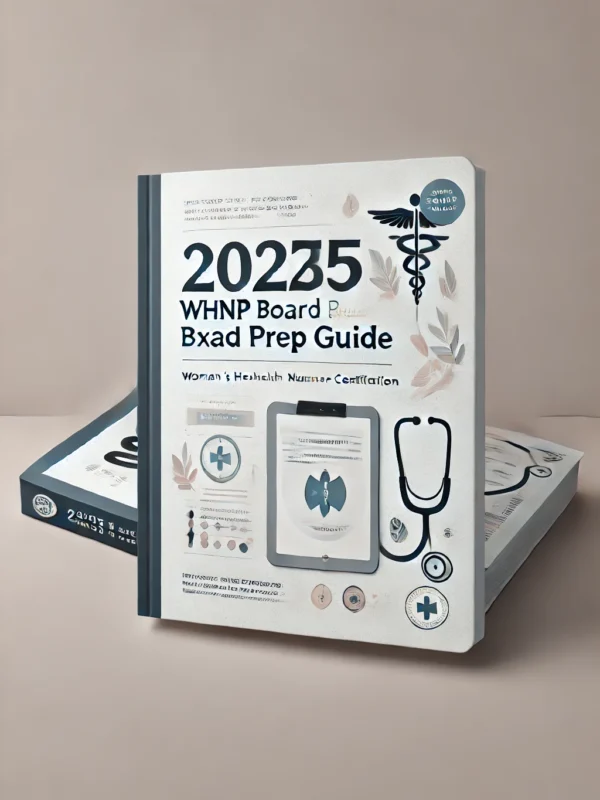Prepare thoroughly for the NCC Electronic Fetal Monitoring (EFM) Certification Exam with this Ultimate Study Guide, featuring practice tests and expert tips to help you succeed. Designed for nurses, midwives, and healthcare professionals seeking certification, this resource covers key EFM concepts, including fetal heart rate patterns, uterine activity, and interpretation of tracings, all aligned with NCC standards. It includes targeted practice tests to simulate the exam experience, along with detailed answer explanations to enhance your understanding of maternal-fetal monitoring. Expert tips provide strategies for accurate interpretation, decision-making, and exam success. Ideal for NCC certification prep or professional development in obstetrics, this guide equips you with the knowledge and confidence to excel in electronic fetal monitoring and ensure safe patient care.
Preview
1. Which of the following factors can have a negative effect on uterine blood flow?
a. Hypertension
b. Epidural
c. Hemorrhage
d. Diabetes
e. All of the above ✅
Rationale: All these conditions can impair uteroplacental circulation. Hypertension can
cause vasoconstriction, epidurals may lead to hypotension, hemorrhage reduces
circulating volume, and diabetes can lead to vascular damage.
2. How does the fetus compensate for decreased maternal circulating volume?
a. Increases cardiac output by increasing stroke volume.
b. Increases cardiac output by increasing its heart rate. ✅
c. Increases cardiac output by increasing fetal movement.
Rationale: The fetus cannot significantly increase stroke volume, so it compensates by
increasing heart rate to maintain adequate perfusion.
3. Stimulating the vagus nerve typically produces:
a. A decrease in the heart rate ✅
b. An increase in the heart rate
c. An increase in stroke volume
d. No change
Rationale: The vagus nerve plays a role in the parasympathetic nervous system, which
slows the heart rate when stimulated.
4. What initially causes a chemoreceptor response?
a. Epidurals
b. Supine maternal position
c. Increased CO₂ levels
d. Decreased O₂ levels
e. A & C
f. A & B
g. C & D ✅
Rationale: Chemoreceptors respond primarily to hypoxia (low oxygen) and hypercapnia
(high carbon dioxide), which can trigger fetal heart rate changes.
5. The vagus nerve begins maturation at 26 to 28 weeks. Its dominance results in what
effect on the FHR baseline?
a. Increases baseline
b. Decreases baseline ✅
Rationale: As the vagus nerve matures, it exerts more parasympathetic control, leading to
a lower fetal heart rate baseline.
a. Hypertension
b. Epidural
c. Hemorrhage
d. Diabetes
e. All of the above ✅
Rationale: All these conditions can impair uteroplacental circulation. Hypertension can
cause vasoconstriction, epidurals may lead to hypotension, hemorrhage reduces
circulating volume, and diabetes can lead to vascular damage.
2. How does the fetus compensate for decreased maternal circulating volume?
a. Increases cardiac output by increasing stroke volume.
b. Increases cardiac output by increasing its heart rate. ✅
c. Increases cardiac output by increasing fetal movement.
Rationale: The fetus cannot significantly increase stroke volume, so it compensates by
increasing heart rate to maintain adequate perfusion.
3. Stimulating the vagus nerve typically produces:
a. A decrease in the heart rate ✅
b. An increase in the heart rate
c. An increase in stroke volume
d. No change
Rationale: The vagus nerve plays a role in the parasympathetic nervous system, which
slows the heart rate when stimulated.
4. What initially causes a chemoreceptor response?
a. Epidurals
b. Supine maternal position
c. Increased CO₂ levels
d. Decreased O₂ levels
e. A & C
f. A & B
g. C & D ✅
Rationale: Chemoreceptors respond primarily to hypoxia (low oxygen) and hypercapnia
(high carbon dioxide), which can trigger fetal heart rate changes.
5. The vagus nerve begins maturation at 26 to 28 weeks. Its dominance results in what
effect on the FHR baseline?
a. Increases baseline
b. Decreases baseline ✅
Rationale: As the vagus nerve matures, it exerts more parasympathetic control, leading to
a lower fetal heart rate baseline.











Reviews
There are no reviews yet.